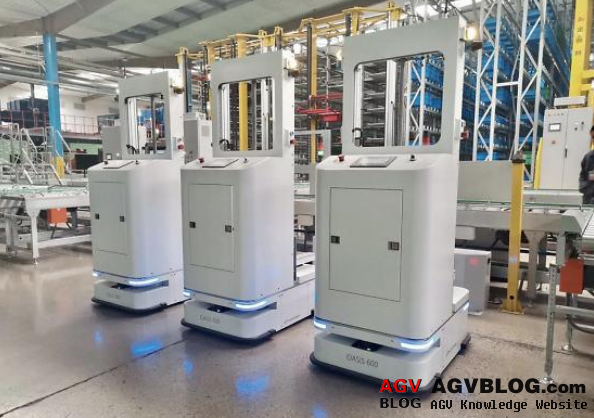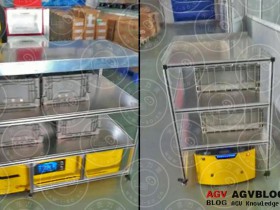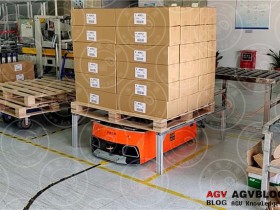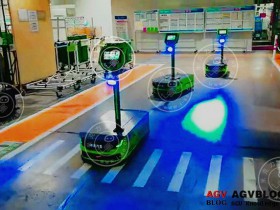The dynamic and flexible manufacturing environment adds many challenges to the movement of autonomous mobile robots (AMR). Due to the complexity of the operation, even a simple route may cause delays. Therefore, from the perspective of utility and safety, the understanding of the relevant rules of the AMR movement needs to be thorough and clear. Liang Kaixiang, chief engineer of pre-sales of Stand Robotics, said that there is a gap in the method of testing the rules related to AMR motion in the factory environment. Testing through simulation alone will not capture the nuances of shop floor interactions, while physical testing alone will be very time-consuming and potentially dangerous.
Therefore, through a new testing method, the STAND robot can observe the AMR behavior of specific cases in the workshop and establish the fidelity of those simulations based on the observation results. Development of simulation model for ideal AMR (algorithm based on path formulation) and physical test of actual AMR in industrial environment. Finally, the behavior comparison between ideal AMR and actual AMR in five scenarios (from industrial partners’ workshops) is given. This work can identify any bad behavior so that an informed decision about the implementation of AMR can be made, which can then be mitigated by improving AMR or reducing the potential impact of these behaviors by establishing workshop agreements.
Robots in the industrial field have evolved from powerful stationary machines to complex mobile platforms to meet a wide range of automation needs. An autonomous mobile robot (AMR) uses feedback from sensors to navigate its environment. This is different from the traditional automatic guided vehicle (AGV), which uses electromagnetic wires, inertial navigation, optical sensors or infrared sensors to limit it to a predetermined path. In contrast to this, AMR has greater built-in intelligence, and can detect obstacles on its path and recalculate the route to bypass the obstacles to reach its destination. Due to the high efficiency and low operating cost of AMR, they have found applications in various industries. At present, for ideas such as smart factories and self-organization, they are regarded as an important part of "Industry 4.0".
In wing production at the Airbus plant, large AGVs are used to move wing assembly structures and aircraft components between manufacturing units. As productivity increases, the movement and availability of AGVs become constraints, requiring many manual interventions to deal with deadlocks (such as traffic jams). In order to cope with the increased logistics movement, a more flexible system is needed to reduce the need for dedicated floor space and manual intervention, thereby promoting the development of fully autonomous vehicle technology. However, the challenge is to develop a reliable system that can be fully integrated into the existing factory environment to solve complex logistics operations with simple solutions provided on the market.
Therefore, STAND concentrated the research and development team, through the in-depth and summary of the path algorithm, researched STAND developed the LMNS+ (LOCALIZATION, MAPPING AND NAVIGATION SYSTEM) robot core. The core collects and organizes the rules into their respective categories, and will expand the understanding of the rules that determine the operational capabilities of AMR. Through the core of this technology, it is easier and safer for humans to interact with AMR; by solving problems such as traffic congestion, without resorting to central authorities such as fleet controllers, it helps to solve greater autonomy issues; And enhance interoperability.
Experiments conducted on the AMR system show that in the event of any motion deadlock, AMR will not follow a set of standard rules about how the vehicle interacts or communicates with the surrounding environment and each other effectively. In a static environment, this can be alleviated by careful programming. The dynamic and flexible environment presents greater challenges, leading to delays in AMR movement. However, if only AMR can communicate its intent according to a set of recognized rules and priorities, most types of obstacles (such as people or other AMRs) can move on their own to adapt to the blocked AMR. On the contrary, by better understanding the behavior of people and other vehicles, AMR can predict their next actions and make corresponding decisions. The LMNS+ system of STAND Robot is realized through this principle. It supports multi-path planning, and provides multiple processing mechanisms such as shortest path driving, avoidance control, and path re-planning. It can deal with various driving roads, main roads, crossroads, The T-port area is dynamically managed to avoid road congestion.
Liang Kaixiang, the chief engineer of Stand Robotics pre-sales, also pointed out that the core technology includes different path planning methods, robot control architecture, sensor system analysis and speed estimation technology, as well as an overview of optimized scheduling, scheduling and routing methods. One of the key points of the algorithm is to pick up and deliver goods, select the best control rules and optimize AMR scheduling for multi-load AGVs. Modeling and simulating complex systems is often the only way to fully analyze and design them. Concentrated exercise plans are computationally expensive. Therefore, this research involves the research of solutions that are sensitive to the quality of the solution but not to the calculation time. The investigation of the performance and calculation requirements of various exercise planning and control techniques has been discussed to evaluate the various options at the system level Compatibility and calculation compromise, regardless of its impact on the actual workshop scene. Although the above work studies the behavior of AMR in individual situations, the method used in this study simulates the behavior of vehicles in a variety of situations that may be encountered.
Due to the lack of understanding of the algorithms related to AMR mobile, most AGV manufacturers efficiently and safely arrange AGVs in a dynamic and flexible manufacturing environment. This is also one of the reasons why they are unable to further upgrade their industries to enter the AMR industry. The priority of the technical level makes the Stand Robot stand out. With the OASIS300/600D chassis mobile robot (AMR) as the transportation core, coupled with the cooperation of the FMS scheduling system, it can realize stable and reliable flexible logistics production, and find standardized and reproducible algorithm application scenarios for excellent system integrators and terminal manufacturing plants. Realize its flexible and agile intra-factory logistics requirements, implement initial logistics investment for customers with light assets and quick returns, build an informationized and data-based logistics infrastructure for the industry, and apply laser SLAM navigation AMR to actual industrial logistics field.





